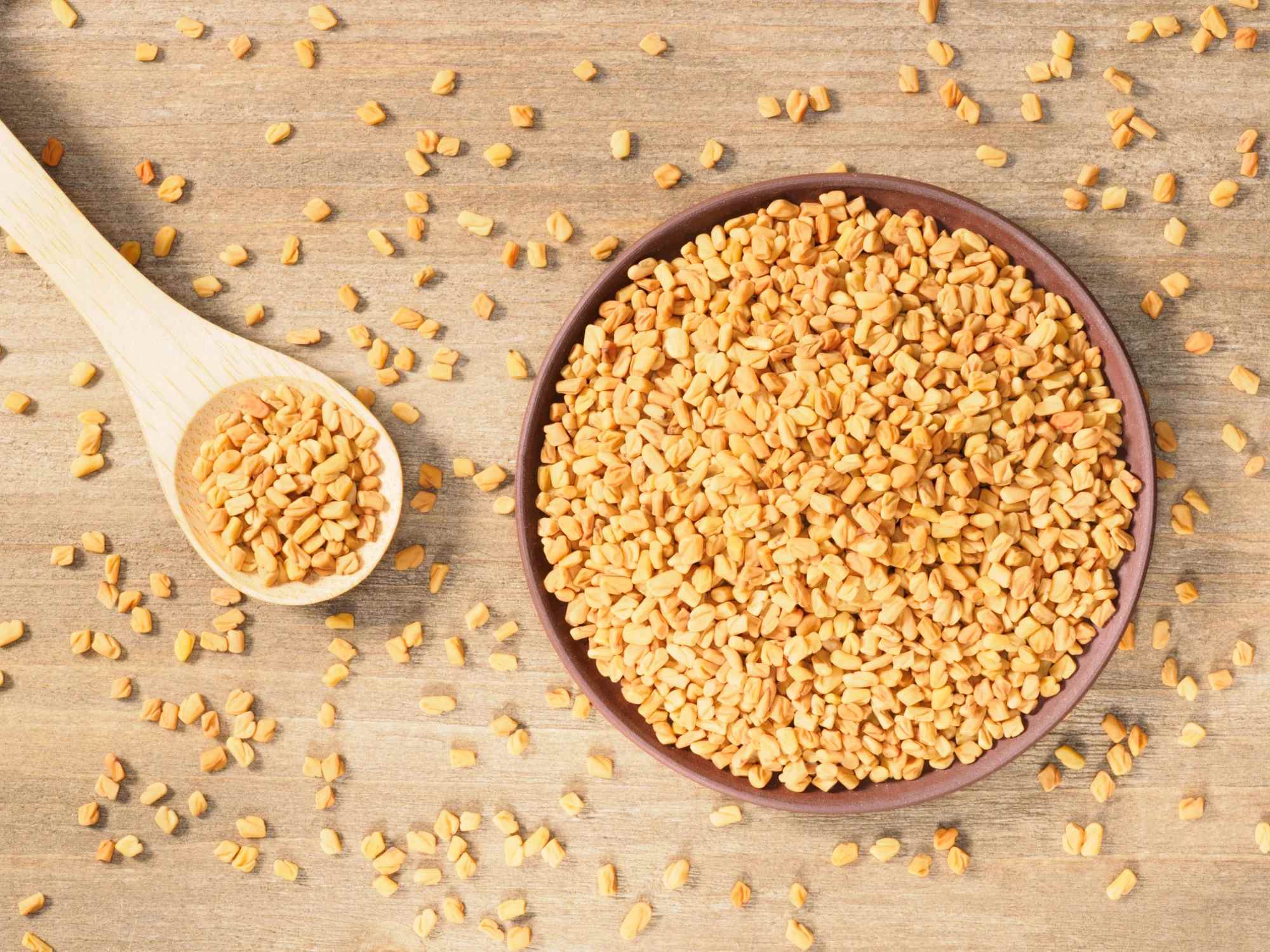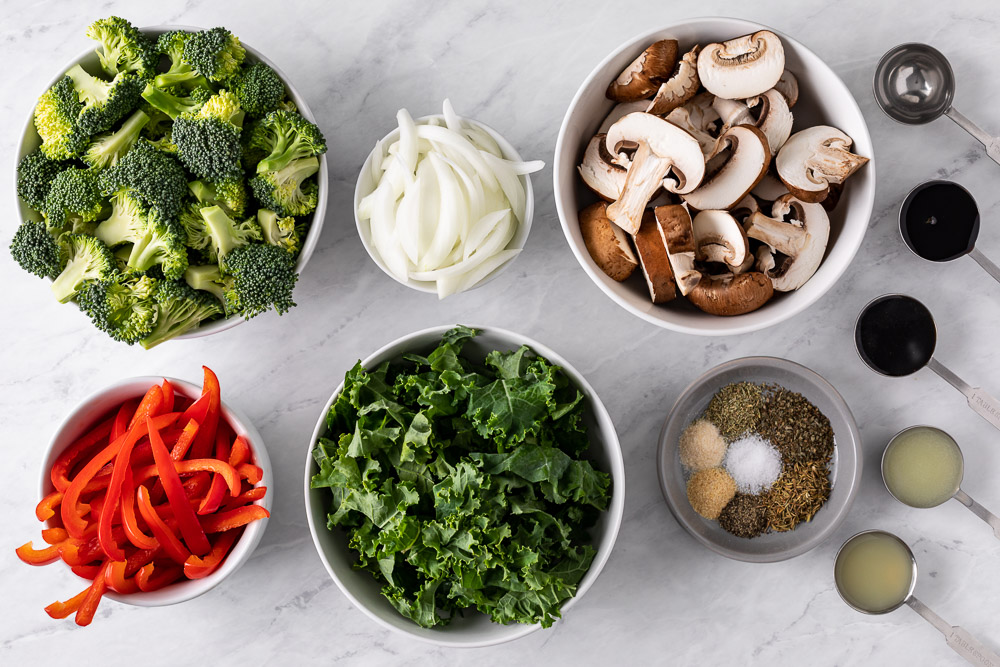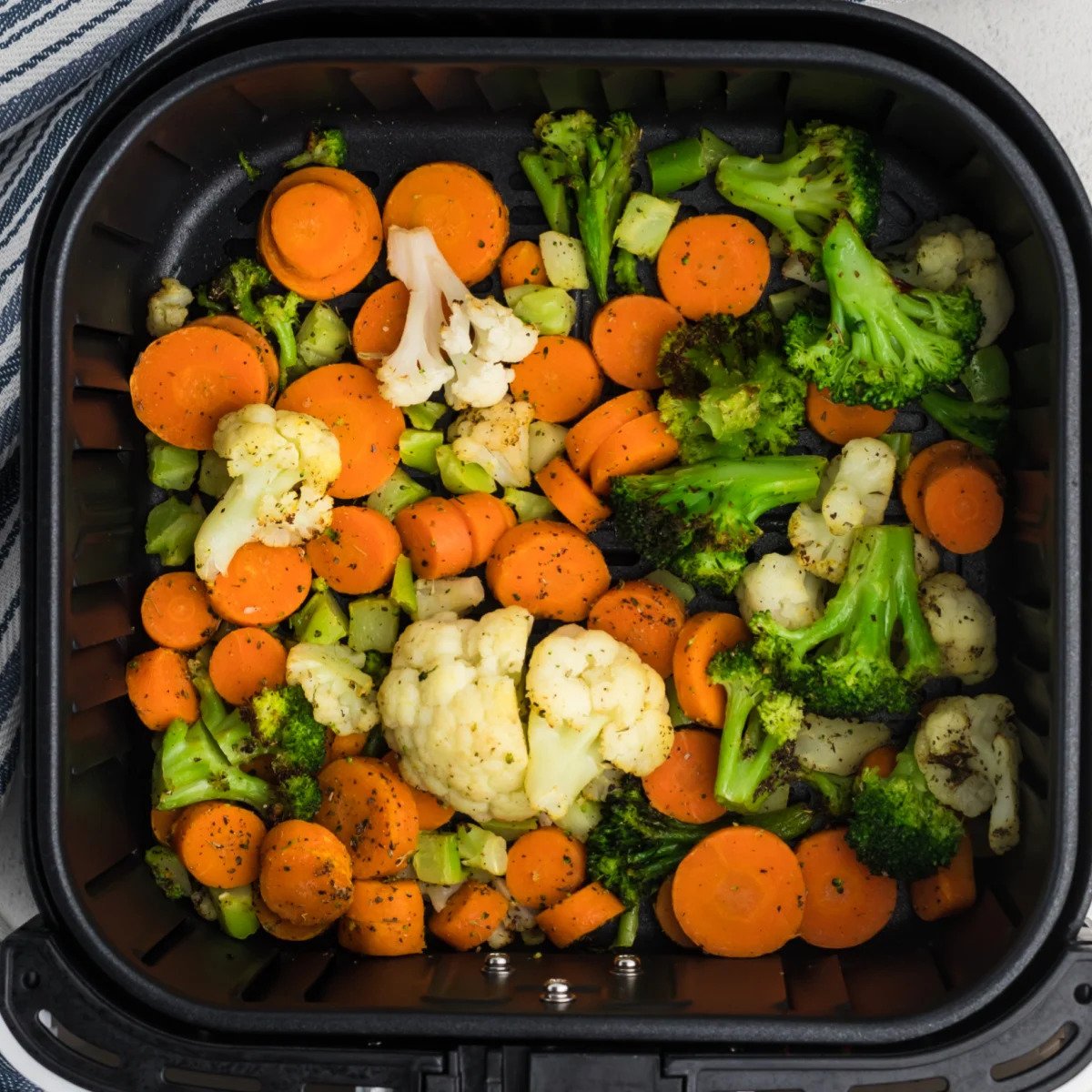Home>Types of Gardening>Edible Gardening>How To Cook Fenugreek Seeds


Edible Gardening
How To Cook Fenugreek Seeds
Modified: January 22, 2024
Learn how to incorporate fenugreek seeds into your edible gardening projects and discover new ways to cook them in flavorful dishes.
(Many of the links in this article redirect to a specific reviewed product. Your purchase of these products through affiliate links helps to generate commission for Chicagolandgardening.com, at no extra cost. Learn more)
Table of Contents
Introduction
Welcome to the world of edible gardening! If you’re looking for a rewarding and sustainable hobby that allows you to grow your own fresh produce, then you’ve come to the right place. In this article, we will delve into the wonderful world of edible gardening, specifically focusing on how to grow and care for various plants that are not only visually appealing but also delicious and nutritious.
Edible gardening is the art of cultivating plants that produce food, ranging from fruits and vegetables to herbs and spices. Not only does it provide a sense of fulfillment and satisfaction, but it also allows you to have control over the quality and taste of your food. Plus, there’s nothing quite like the satisfaction of being able to walk out into your own backyard and pick fresh ingredients for your meals.
One particular aspect of edible gardening that we will be exploring in this article is the cultivation of fenugreek seeds. Fenugreek seeds, also known as Methi, are small, golden-brown seeds that are commonly used in Indian, Middle Eastern, and Mediterranean cuisines. They have a unique, slightly bitter taste and a strong aroma, making them a popular choice for adding depth and flavor to a wide variety of dishes.
In addition to their culinary uses, fenugreek seeds also offer numerous health benefits. They are rich in fiber, protein, and essential nutrients such as iron, magnesium, and manganese. Fenugreek seeds have been traditionally used for their medicinal properties, including improving digestion, boosting the immune system, and regulating blood sugar levels. They are also believed to help with lactation in nursing mothers and promote healthy hair and skin.
Whether you’re a seasoned edible gardener looking to expand your repertoire or a beginner hoping to embark on a new gardening adventure, cultivating and cooking with fenugreek seeds can bring a unique and exciting twist to your culinary endeavors. So, let’s dive in and explore the wonderful world of fenugreek seeds and how to incorporate them into your edible garden and kitchen.
Benefits of Fenugreek Seeds
Fenugreek seeds offer a plethora of health benefits, making them a wonderful addition to any diet. Let’s explore some of the key benefits of incorporating fenugreek seeds into your culinary repertoire:
- Improved Digestion: Fenugreek seeds are loaded with soluble and insoluble fiber, which aids in digestion and promotes a healthy gut. They can help alleviate constipation, indigestion, and stomach bloating, providing relief and improving overall digestive health.
- Regulated Blood Sugar Levels: Fenugreek seeds have been shown to have a positive impact on blood sugar control. The seeds contain compounds that help slow down the absorption of glucose, resulting in better blood sugar regulation. This makes them particularly beneficial for individuals with diabetes or those at risk of developing the condition.
- Enhanced Weight Loss: The soluble fiber in fenugreek seeds helps create a feeling of fullness, reducing cravings and aiding in weight management. Additionally, fenugreek seeds have been shown to increase fat metabolism, making them a valuable ingredient for those looking to shed some extra pounds.
- Boosted Immune System: Fenugreek seeds are rich in antioxidants and anti-inflammatory compounds, which help strengthen the immune system and protect the body against various illnesses and infections. Including fenugreek seeds in your diet can help support overall immune health and keep you feeling strong and resilient.
- Improved Milk Production: Fenugreek seeds are often recommended to breastfeeding mothers as they are believed to stimulate milk production. The galactagogue properties of fenugreek seeds can help increase milk supply, ensuring that nursing mothers have an ample amount of nourishment for their babies.
These are just a few of the many benefits that fenugreek seeds offer. From promoting digestion and regulating blood sugar levels to aiding in weight loss and boosting the immune system, incorporating fenugreek seeds into your meals can provide numerous advantages for your overall health and well-being.
Choosing and Preparing Fenugreek Seeds
When it comes to choosing fenugreek seeds, it’s important to select high-quality seeds that are fresh and free from contaminants. Look for seeds that are golden-brown in color, as this indicates that they are ripe and ready for use. Avoid any seeds that appear dull, discolored, or have a musty smell, as these may be old or of poor quality.
Before using fenugreek seeds, it’s essential to properly prepare them to maximize their flavor and ensure they are safe for consumption. Here’s a step-by-step guide on how to prepare fenugreek seeds:
- Cleaning: Start by removing any dirt or debris from the fenugreek seeds. Rinse them under cold running water and use your hands to gently rub the seeds to get rid of any impurities.
- Soaking: Soaking fenugreek seeds can help soften them and make them easier to cook with. Place the cleaned seeds in a bowl and cover them with water. Let them soak for at least 4-6 hours or overnight for best results. After soaking, drain the water and pat the seeds dry with a clean towel.
- Roasting (Optional): To enhance the nutty flavor of fenugreek seeds, you can choose to roast them. Heat a dry pan over medium heat and add the soaked and drained fenugreek seeds. Stir them continuously for a few minutes until they turn slightly brown and emit a savory aroma. Be careful not to burn them. Once roasted, remove them from the heat and let them cool before using or storing.
- Grinding: Depending on the recipe, you may need to grind fenugreek seeds into a powder. Use a spice grinder or a mortar and pestle to grind the seeds into a fine powder. Freshly ground fenugreek seeds will have a stronger flavor and aroma compared to pre-ground varieties.
Now that you know how to choose and prepare fenugreek seeds, you can confidently incorporate them into your culinary creations. Whether you decide to use them as whole seeds or ground powder, proper preparation ensures that you get the most out of their unique flavor and health benefits.
Basic Cooking Methods
Fenugreek seeds can be used in a variety of ways in your cooking, adding depth and a unique flavor to your dishes. Here are some basic cooking methods to help you incorporate fenugreek seeds into your culinary creations:
- Tempering: The most common way to use fenugreek seeds in Indian cuisine is through tempering, also known as tadka. Heat oil or ghee in a pan and add fenugreek seeds along with other spices like cumin seeds, mustard seeds, and curry leaves. Allow the seeds to sizzle and release their aroma before adding them to your dishes. This technique infuses the dishes with the distinct flavor of fenugreek seeds.
- Powdered Spice: Ground fenugreek seeds can be used as a spice to add flavor to various dishes. Sprinkle a pinch of fenugreek powder into curries, stews, or soups to enhance the overall taste. It pairs particularly well with other spices like turmeric, cumin, and coriander.
- Herbal Tea: Fenugreek seeds can be used to make a soothing and aromatic herbal tea. Bring water to a boil and add a teaspoon of fenugreek seeds. Let it simmer for a few minutes, then strain the mixture. You can enjoy this tea as is, or add honey or lemon for added flavor.
- Sprouting: Fenugreek seeds can be sprouted and used as a nutritious addition to salads, sandwiches, and wraps. Soak the seeds overnight and drain the water. Place them in a damp cloth and leave them at room temperature for a couple of days. Rinse the sprouts regularly and once they have grown to your desired length, they are ready to be added to your dishes.
- Pickle or Chutney: Fenugreek seeds can be used to make pickles or chutneys, adding a tangy and slightly bitter flavor. Combine fenugreek seeds with ingredients like vinegar, lime juice, and spices to make a savory pickle that can be enjoyed as an accompaniment to meals or as a condiment with snacks.
These are just a few of the many ways you can incorporate fenugreek seeds into your cooking. Whether you choose to temper them for aromatic curries or grind them into a powder for spice blends, the versatility of fenugreek seeds allows you to experiment and create flavors that suit your palate.
Recipes Using Fenugreek Seeds
Ready to elevate your culinary game and experiment with fenugreek seeds? Here are a few delicious recipes that showcase the unique flavor and versatility of these seeds:
- Butter Chicken: A classic Indian dish, butter chicken is made with succulent chicken pieces cooked in a rich and creamy tomato-based sauce. Fenugreek seeds are tempered in hot ghee or butter and added to the sauce, giving it a distinct flavor. This aromatic and flavorful dish pairs perfectly with naan bread or steamed rice.
- Methi Paratha: Methi paratha is a flavorful and nutritious Indian flatbread made with fenugreek leaves and whole wheat flour. The fenugreek leaves are finely chopped and mixed with the dough, along with spices like cumin, turmeric, and chili powder. Roll out the dough into flatbreads and cook them on a hot skillet until golden brown. Enjoy these parathas with a dollop of yogurt or pickle.
- Methi Dal: This comforting lentil dish incorporates both the flavor of fenugreek seeds and fenugreek leaves. To make methi dal, cook lentils until soft and then temper them with a mix of mustard seeds, cumin seeds, and fenugreek seeds. Add finely chopped fenugreek leaves and cook until wilted. Season with spices like turmeric, chili powder, and garam masala. Serve this hearty dal with steamed rice or naan bread for a satisfying meal.
- Paneer Methi: Paneer methi is a creamy and aromatic Indian dish made with fresh fenugreek leaves and paneer (Indian cottage cheese). Start by frying paneer cubes until golden brown. In a separate pan, temper fenugreek seeds and spices, then add chopped fenugreek leaves and sauté until wilted. Add the fried paneer, along with a creamy tomato-based sauce, and let the flavors meld together. Serve this delectable dish with rice or roti.
- Fenugreek Seed Bread: Fenugreek seeds can also be incorporated into bread recipes, adding a unique and slightly nutty flavor. You can use whole or ground fenugreek seeds in your favorite bread recipe to give it an extra boost of taste. The seeds can be added directly to the dough or sprinkled on top for a crunchy texture.
These recipes are just a starting point; feel free to get creative and experiment with fenugreek seeds in your own dishes. From aromatic curries to savory bread, the possibilities are endless when it comes to using fenugreek seeds in your culinary creations!
Tips and Tricks for Cooking with Fenugreek Seeds
As you embark on your culinary journey with fenugreek seeds, here are some tips and tricks to help you make the most out of this flavorful ingredient:
- Use in Moderation: Fenugreek seeds have a distinct and slightly bitter taste, so it’s important to use them in moderation. Start with a small amount and adjust according to your taste preferences. Remember, a little goes a long way!
- Toast Before Use: To enhance the flavor of fenugreek seeds, consider toasting them lightly in a dry pan before using them in your recipes. This step helps release their aromatic oils and adds a nutty touch to the overall taste.
- Combine with Other Spices: Fenugreek seeds work well when combined with other spices to create depth and complexity in dishes. Experiment with pairing fenugreek seeds with cumin, coriander, turmeric, and chili powder to create a robust flavor profile.
- Experiment with Different Cuisines: While fenugreek seeds are commonly used in Indian cuisine, don’t be afraid to explore and incorporate them into other culinary traditions as well. They can add an interesting twist to Middle Eastern, Mediterranean, and even Western dishes.
- Soak or Grind as Needed: Depending on the recipe, you may need to soak fenugreek seeds before cooking or grind them into a fine powder. Ensure you follow the instructions for each recipe to achieve the desired texture and flavor.
- Store Properly: To preserve the flavor and freshness of fenugreek seeds, store them in an airtight container in a cool, dark place. This will help extend their shelf life and maintain their potency.
- Explore Beyond Seeds: While fenugreek seeds are commonly used, don’t overlook the fenugreek leaves, known as methi as well. These leaves have a slightly bitter taste and are often used fresh or dried in various dishes. They can be sautéed, added to curries, or used as a garnish.
- Adjust for Dietary Restrictions: If you have any dietary restrictions or allergies, consult with a healthcare professional before incorporating fenugreek seeds into your cooking. It’s always important to ensure that any ingredient you use aligns with your individual dietary needs.
Remember, cooking is a creative process, so don’t be afraid to experiment and adapt recipes to suit your taste preferences. Enjoy the journey of discovering new flavors and incorporating fenugreek seeds into your favorite dishes!
Conclusion
Congratulations! You’ve now gained valuable insights into the world of fenugreek seeds and their role in edible gardening and cooking. From their numerous health benefits to their unique flavor and versatility, fenugreek seeds have become a beloved ingredient in cuisines around the world.
By incorporating fenugreek seeds into your culinary repertoire, you can elevate the taste and nutritional value of your dishes. Whether you choose to use whole seeds for tempering, ground seeds for spice blends, or fenugreek leaves for added freshness, the possibilities are endless.
Remember to choose high-quality fenugreek seeds, properly prepare them, and experiment with different cooking methods and recipes. Fenugreek seeds can add depth and complexity to curries, bread, lentils, and even beverages like herbal tea. Explore different cuisines and adapt recipes to suit your taste preferences.
As you embark on your edible gardening journey, consider adding fenugreek plants to your garden. Not only will you have a fresh supply of fenugreek leaves, but you’ll also have the opportunity to harvest your own seeds, further connecting you to the marvelous world of edible gardening.
So, whether you’re just starting out or already an experienced gardener, the addition of fenugreek seeds to your edible garden and kitchen is sure to bring new flavors and experiences to your culinary ventures. Enjoy the process, savor the flavors, and take pride in growing and cooking with fenugreek seeds!









